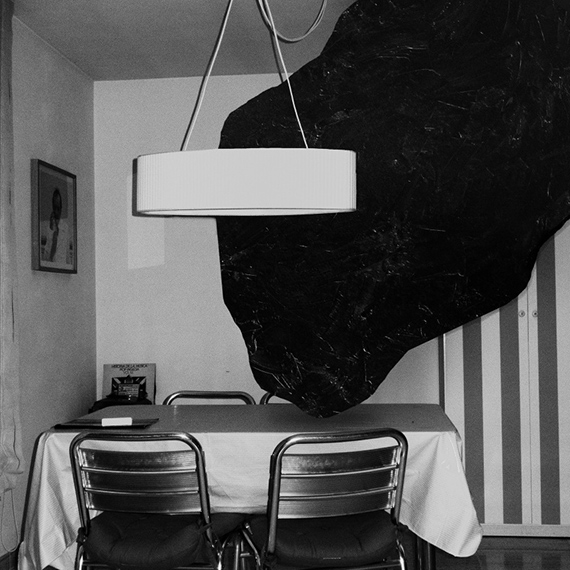
© Yurian Quintanas Nobel
THE VIA COMBUSTA
The 3rd Awarded Exhibition of the Jimei x Arles Curatorial Award for Photography and Moving Image
Magali Duzant » Yurian Quintanas Nobel » Alex Turner » Alice Wang » & others
Exhibition: 11 May – 16 Jun 2024

Three Shadows Photography Art Center
No.155, Caochangdi, Chaoyang District
100015 Beijing
+86-10-64322663
info@threeshadows.cn
threeshadows.cn/
Tue-Sun 10-18
The logic and traffic flow of ”The Via Combusta” look like a flowing river, running from macro to micro, from outside to inside, from the vast nature to cities, to residence of human beings, to human body and skin, and ultimately to the starry sky. With this journey into the realm where technology and human spirit intermingle, human beings eventually become the medium connecting the two.
The title of this exhibition, “The Via Combusta”, which translates as ‘the burning way’, borrows a segment from the dark phase of the sun and moon in the astrological chart. In this era where spirituality is distant,Curators Gan Yingying and Zhou Yichen along with eight artists, hope to provoke human reflections on the relationship between technology and spirituality through this exhibition.
It started with a psychic flyer found by artist Magali Duzant , who invites the audience to look at the world from a new perspective in her work The Moon and Stars Can be Yours. Using thermal cameras and AI image recognition software - “the indifferent eyes of technology”, photographer Alex Turner reveals the nature of beings and boundaries in Blind River. Alice Wang invites the audience to join the process of building geometrical devices for communicating with the universe in her series Pyramids and Parabolas II. In Skin Series, Vivian Xu uses wearable equipment to graft non-human creatures’ sense onto human body and grant human new senses, challenging the anthropocentric perspective. Josef Kovac ’s Searching for Sergei connects a boy waking from a nightmare and an astronaut trapped in space, creating a pseudo-documentary narrative and “synchronic” experience, a metaphor for an individual in the context of a nation’s major geopolitical change. Yurian Quintanas Nobel sets the rule of “all the photographs had to be made within the limits of my house” when creating Dream Moon, and explores the unseen. In Song Xi 's works Looking up to the Starry Night, Ode to Joy, and Ritual: 10,000 times pray, light and darkeness, birth and death, as well as technology interact in the most relaxed and playful way. In Shaman Map II On the Road, Gu Tao travels back and forth in northern China in search of shaman, who connect the physical and the mental world, as well as the past, present and future with their bodies.
After the winner annoucement of the 3rd Jimei x Arles Curatorial Award for Photography and Moving Image in December 2023, the proposal of “The Via Combusta” was realized with the support of the Award, and debuted at Fotografiska Shanghai in March 2024. During the exhibition in Shanghai, curators Gan Yingying and Zhou Yichen conducted the workshop “The Eagle Dream of Madame Darget”with local emerging artists Yan Jialin, Zhu Junqiao, Liu Yikun, Gao Kang, and Zhang Yilin . The creative outcomes of this workshop will be part of the Beijing show as a special presentation, marking the beginning of an ongoing discussion and exploration on “the Via Combusta” based on “technology and invisible forces”
According to Bernard Stiegler's reinterpretation of the Prometheus myth in "Technics and Time," humans, compared to all things, were originally a species with no advantages, destined to die in the forest, a "primordial lack." However, Prometheus stole fire from the gods on Mount Olympus, giving humans the ability to survive, as a consequence of technology itself.
Currently, with the development of AI and SpaceX, the world has entered a new stage, where technological advancement has greatly expanded the possibilites of the human body. However, the human spirit have not escaped confinement. While visual space is extended, individuals still live in a society of spectacle, memories are externalized by computers, yet there is fear of being replaced by artificial intelligence. In this dilemma, how should people reconsider their lives? Faced with an uncertain world, humans tend to turn to invisible forces for solace and understanding.
The exhibition explores how contemporary artists discuss the exploration between technological development and invisible forces. Magali Duzant's work, "The Moon and the Stars Can Be Yours," starts with a psychic flyer received on the New York subway, inviting the audience to reconsider the world. It delves into the common confusions faced by young people, while the Soviet-developed halo camera points directly to the energy levels behind these questions, intertwining spiritualism with complex histories such as consumerism, feminism, mental health, and deception.
In the southern United States, environmental citizen scientist Alex Turner researches environmental protection, using infrared cameras and AI recognition software to capture life images on the border and the governments is using the same technology with different purposes.
"When intelligent species appear, natural conditions take effect. Combined with a certain level of technological ability, their planetary habitat has reached saturation." Space travel is considered a natural impulse after a certain level of technological development. Artist Alice Wang, with the study background of computers and international relations, explores the history of communicating with the universe using large geometric devices, documenting the process of creating communication devices. Using technology to communicate with the external world, interdisciplinary artist Vivian Xu uses microcurrent conduction on the skin to create wearable devices called "Skin Series," allowing humans to perceive how other species sense the world.
In 1991, before the Soviet Union dissolved, an astronaut was stranded in space for 311 days , facing the infinite darkness of space and the fear of not knowing when he could return. This geopolitical turmoil influenced both the astronaut and a boy awakening from a nightmare, as seen in Josef Kovac's "Searching for Sergei," invoking Jung's concept of "synchronicity." Photographer Yurian Quintanas, feeling that the external environment cannot explain everything, turns to photographing his immediate surroundings, exploring the invisible.
Artist Song Xi, in "Looking up to the Starry Sky," uses Photoshop to erase stars from the sky, and in "Ode to Joy," constructs a starry sky with sparks from an electric fly swatter. In "Ritual: 10,000 Times Prayers," Ten thousand uninterrupted switches, alternating between light and darkness like blinking, blurring the boundary between the daily routine and the ritual. The birth and destruction of life and its relationship with technology are humorously portrayed.
In the documentary "Shaman Map" by director Gu Tao, after the death of the oldest female shaman of the Oroqen people in China, the film searches for shamans across China—a trace of the medium connecting the physical and spiritual worlds, past, present, and future. While technology's development won't stop, human spirit can serve as navigation, preventing humanity from getting lost.
The exhibition starts with a river, flowing from macro to micro, from external to internal, traversing nature, cities, human living spaces, bedrooms, the human body, skin, and finally returning to the vast cosmos. Photography is the hidden thread running through it. In the relationship between invisible forces and human perplexities, artists use photography as a means of perspective, a method of study, a witness to actions, or the action itself, continually intertwining with "human," reflecting richer perspectives. The exhibition's title, "The Via Combusta," borrows a segment from the astrological chart where the sun and moon are without light, serving as a metaphor for continuously opening oneself as a channel between spirit and technology. Through this exhibition, in an era too distant from spirituality, it aims to awaken human reflections on the relationship between technology and spirit.